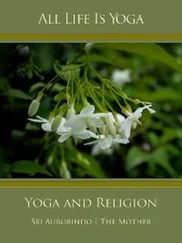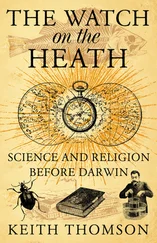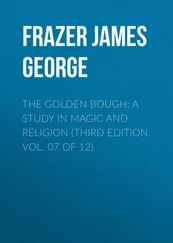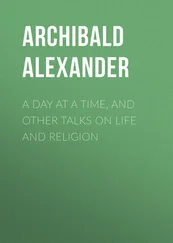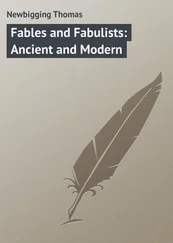Vikernes, Varg - Varg Vikernes - Sorcery and Religion in Ancient Scandinavia
Здесь есть возможность читать онлайн «Vikernes, Varg - Varg Vikernes - Sorcery and Religion in Ancient Scandinavia» весь текст электронной книги совершенно бесплатно (целиком полную версию без сокращений). В некоторых случаях можно слушать аудио, скачать через торрент в формате fb2 и присутствует краткое содержание. Жанр: Старинная литература, на английском языке. Описание произведения, (предисловие) а так же отзывы посетителей доступны на портале библиотеки ЛибКат.
- Название:Varg Vikernes - Sorcery and Religion in Ancient Scandinavia
- Автор:
- Жанр:
- Год:неизвестен
- ISBN:нет данных
- Рейтинг книги:3 / 5. Голосов: 1
-
Избранное:Добавить в избранное
- Отзывы:
-
Ваша оценка:
- 60
- 1
- 2
- 3
- 4
- 5
Varg Vikernes - Sorcery and Religion in Ancient Scandinavia: краткое содержание, описание и аннотация
Предлагаем к чтению аннотацию, описание, краткое содержание или предисловие (зависит от того, что написал сам автор книги «Varg Vikernes - Sorcery and Religion in Ancient Scandinavia»). Если вы не нашли необходимую информацию о книге — напишите в комментариях, мы постараемся отыскать её.
Varg Vikernes - Sorcery and Religion in Ancient Scandinavia — читать онлайн бесплатно полную книгу (весь текст) целиком
Ниже представлен текст книги, разбитый по страницам. Система сохранения места последней прочитанной страницы, позволяет с удобством читать онлайн бесплатно книгу «Varg Vikernes - Sorcery and Religion in Ancient Scandinavia», без необходимости каждый раз заново искать на чём Вы остановились. Поставьте закладку, и сможете в любой момент перейти на страницу, на которой закончили чтение.
Интервал:
Закладка:
22. Inguz means "meadow-friend", "field-friend" or "love" and is connected to Freyr ("spare", "free", "love"). The ground was no longer covered with ice, and it was green and provided man with wealth again. The rune is a picture of the spouses (of the Jera rune) united in the act of making love in the meadow. It represents perfection, destiny, love, desire, willingness, creative energy and fertility.
23. Dagaz means "day", originally its meaning is "heavenly light", and is connected to Baldr ("shining white body", “ball”), alias Bragi ("glory", "first") and Nanna ("eager", "resourceful", "industrious"), alias Íðunn ("eager", "sustainable", "who likes to work", "diligent", "effective", or "recurring work"). The Sun's power and summer returned, and all the fruits of nature returned. The rune is a picture of an hourglass. It represents days, divine light, prosperity, fertility, life, cycles, periods, deadline, breakthrough and hope.
24. Oþala means "noble", original its meaning is "state of mind", and is connected to Ásgarðr ("the spirit garden"). The sorcerer's kingdom was back, reconstructed from the image he had of the previous kingdom. The rune is a picture of the ancestral seat, the throne, symbolizing the rights of the nobleman (the sorcerer). It represents inheritance, the ancient property law (No. Odelsrett ), property, homeland, noble, nobility, inherited goods, fatherland/motherland, reputable family, family and nation.
4.0 Völuspá
4.1 The Prophecy of the Sorceress
The songs/poems learnt by the sorcerers in the grave must have been hard to understand for the uninitiated. Or perhaps the songs were common knowledge, but only the sorcerers knew what they were really all about. Today Völuspá ("the prophecy of the [female] chosen/fallen [i. e. sorceress]") is understood as some sort of Scandinavian myth of creation, and a prophecy dealing with the end of the world. As I will show you in this chapter this common interpretation is not correct.
To understand what the songs are really all about you first of all need to know that they need to be interpreted in a specific sequence. We learn from Hávamál that the sorcerers' songs and spells were closely associated with the runes. So to understand the songs we need to read each verse with the sequence of the runes in mind, and to link the verses to the right runes.
I may add that I spend no time trying to make the English translation of theses verses poetic, although they really are, in the original (Norse) language, but instead I try to translate them as literally as I can, to ensure that the meaning is not lost.
4.2 Freyr's first Group of eight
1
I ask for silence from all
sacred families,
large or small
sons of the world tree;
you will, that I, father of the chosen,
tell well
the old stories
to those who are first amongst men.
This verse is connected to Fehu and the cow Auðhumbla ("silence"). The winners of the bride's races, “the first amongst men”, sacrificed a cow on the burial mound, after hanging their clothes in the world tree, to learn the sacred verses in the realm of the dead. The chosen/first amongst men had to be silent, to imitate the dead, but also because they had to listen to the spirit/goddess of the dead (in the burial mound) to learn the old stories (sacred songs).
2
I remember hunger,
from the previous year,
that in the past
had given me food;
nine worlds I remember,
nine boughs
famous tree
underground.
This verse is connected to Uruz and Þursaz , Ymir (the sound of the lures) and Bölþorn. The sorcerers/gods dressing up like gods, had fasted in the days before the New Year's Eve, in the previous year (according to the ancient calendar) and was now ready to enter the burial mound. They needed nine sacred boughs (including the mistletoe; Bölþorn), to open up the nine different levels of Hel. For each bough presented to the queen of the grave, they learnt a new song. Thus Óðinn could sing that he learnt nine songs from Bölþorn; the sacred boughs.
3
It was in the beginning of the year
when there was
neither sand nor sea
nor cool waves,
no Earth
nor the high heavens
the door (gap) was open
grass nowhere.
This verse is connected to Þursaz and Bölþorn, the serpent. The New Year's Eve was the first day of the year, or to be precise a day between all years, and thus a day beyond all worlds. It was a Middle Earth, Miðgarðr, a world between all other worlds. The chosen were about to enter the dark grave chamber, where he saw nothing; no sand nor sea, no cool waves, Earth or Heaven. The entrance to the grave mound was open, and there was no grass either in the realm of the dead.
4
Before the sons of the initiator
opened up the land
those who created the famous
world in the middle;
the Sunlight shone from the Sun
on stone halls
whereupon the ground grew
green growths.
This verse is connected to Ansuz and Óðinn. Before the chosen opened the entrances to the burial mounds, the world in between all worlds, while the Sun shone outside. On top of this stone hall the grass and other growths grew. Even the trees were allowed to grow freely on the burial mounds, and they were fenced in to make sure no animals grassed there. No herbs were ever gathered from the burial mounds either. The dead had themselves created (built) their own grave mounds (the world in the middle).
5
The Sun threw rays of Sunlight
on the Moon
the right hand
on the firmament;
Sun who did not know
where she belonged,
Moon who did not know
what power he had
stars who did not know
where they belonged.
This verse is connected to Raiþo and Kauna , Þórr, Loki and Svartr. The chosen went into the stone halls, the graves, where the Sun, Moon and stars had no power and could not be seen. Inside was only darkness, until Winter Solstice, when the Sunlight woke up the dead and showed them the way out.
6
Then all the powers went
to the seats of the end (i. e. the grave)
the sacred gods,
and agreed;
night and her descendants
were given names
morning was it
and midday
afternoon and evening
to count the years.
This verse is connected to Gebo and Heimdallr. The chosen went to the innermost chamber, where the dead were seated, as was the queen of the grave, and they were there for a long time; all night, the following morning, midday, afternoon and evening, right into the next day, when the new year began. I may add that in the Stone and Bronze Age the dead were usually buried sitting up, and not lying down, as is common today.
7
Met the spirits
in the field of stagnation
those who temples and mounds
built high;
built heaths
forged valuable objects,
created thongs
and made tools.
This verse is connected to Gebo and Wina , Heimdallr and Fjörgyn. In the burial mound they met the dead, their own ancestors, who at one point had built the burial mounds and temples, and they took the valuable items the dead had once crafted, that now lay in the grave with them.
4.3 Hagall's first Group of eight
8
They played in the yard,
were playful,
had no shape
were used to gold;
until three women,
noisy maidens
very powerful,
came from the world of hunger.
This verse is connected to Hagalaz and Nauþi , Ægir and the Norns. When they left the burial mounds they were still naked, their clothes still hanging in the world tree, and they were therefore without shape. They were initiated and brought with them the gold and other valuables from Hel, the world of hunger. The women playing the role of Hel/the Norns in the grave came out as well, still chanting sacred verses.
Читать дальшеИнтервал:
Закладка:
Похожие книги на «Varg Vikernes - Sorcery and Religion in Ancient Scandinavia»
Представляем Вашему вниманию похожие книги на «Varg Vikernes - Sorcery and Religion in Ancient Scandinavia» списком для выбора. Мы отобрали схожую по названию и смыслу литературу в надежде предоставить читателям больше вариантов отыскать новые, интересные, ещё непрочитанные произведения.
Обсуждение, отзывы о книге «Varg Vikernes - Sorcery and Religion in Ancient Scandinavia» и просто собственные мнения читателей. Оставьте ваши комментарии, напишите, что Вы думаете о произведении, его смысле или главных героях. Укажите что конкретно понравилось, а что нет, и почему Вы так считаете.

